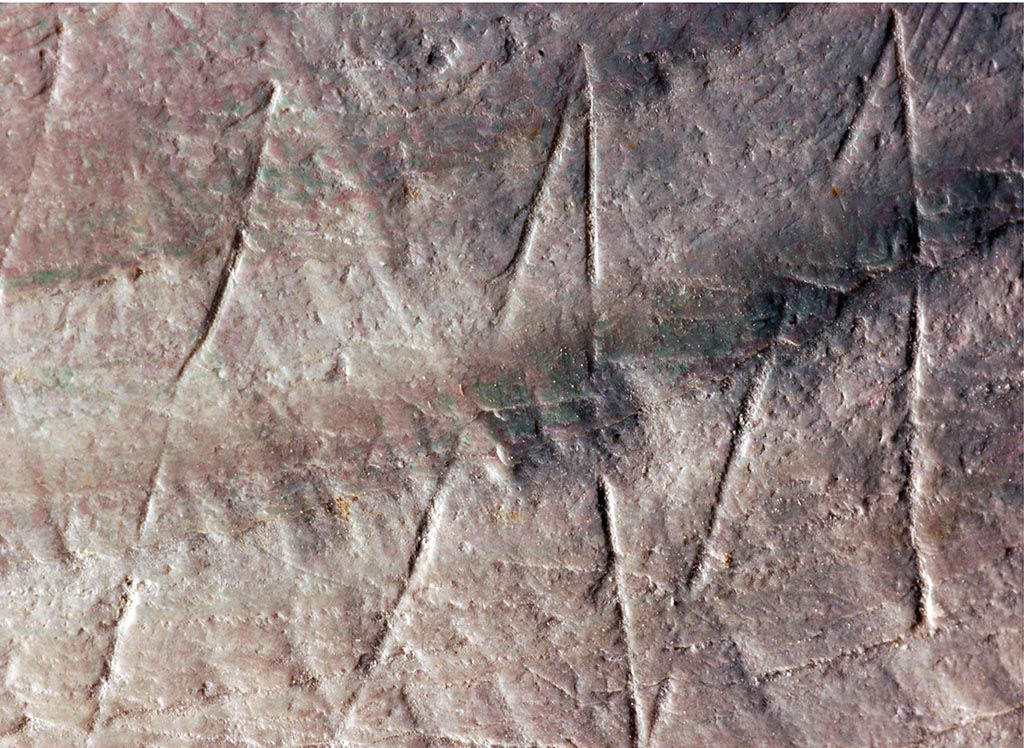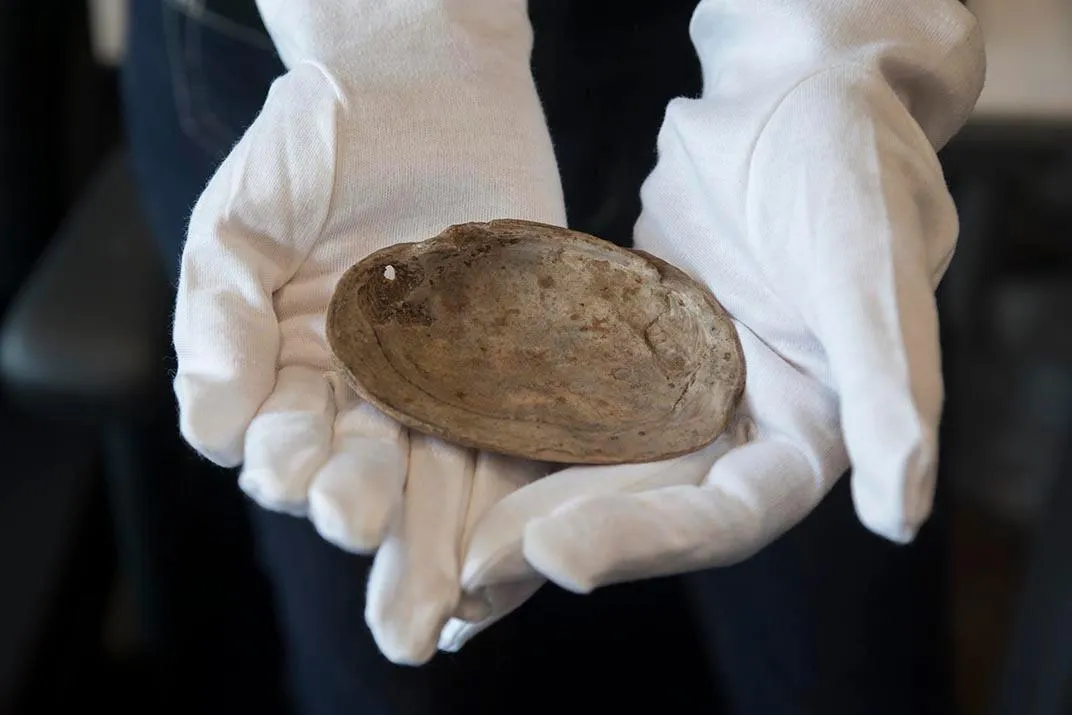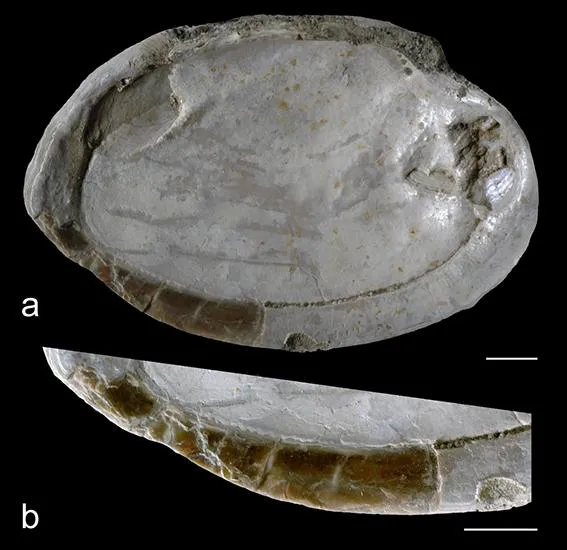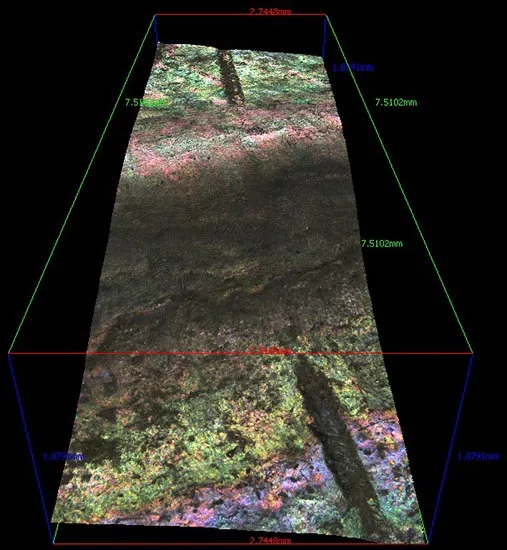Zigzags on a Shell From Java Are the Oldest Human Engravings
The early human Homo erectus also made the oldest known shell tools half a million years ago
/https://tf-cmsv2-smithsonianmag-media.s3.amazonaws.com/filer/54/a8/54a8257b-aa4b-411f-831e-8248be876b14/joordens_trinil_engravedshelledit.jpg)
On the banks of the Solo River in Java, Indonesia, 19th-century physician Eugene Dubois uncovered an astounding fossil find: the bones of what appeared to be an ancient human, surrounded by animal remains and shells. Excavated in the 1890s, the site gained fame as the home of “Java Man,” better known today as Homo erectus.
Dated to between a million and 700,000 years old, the bones immediately provoked controversy, because Dubois claimed they showed evidence of a transitional species between apes and humans. It turns out he was right—Homo erectus fossils have since been found in Africa and elsewhere in Asia, and it is possible the species is a direct ancestor of our own. But it’s the palm-sized shells found alongside the Java remains that are raising big questions today. An examination of the shells published in Nature suggests that Homo erectus may have used the shells for tools and decorated some of them with geometric engravings. At around half a million years old, the shells represent the earliest evidence of such decorative marks and also the first known use of shells to make tools.
Dubois collected 11 species of freshwater shells at the site, called Trinil. Most of them belong to the sub-species Pseudodon vondembuschianus trinilensis, a now extinct freshwater mussel he described in 1908. Initially scientists thought the mollusks had naturally clustered at the site, perhaps driven by water currents. Even without a connection to the human fossil, the cache provided a nice census of ancient freshwater shell life, coming from at least 166 Pseudodon individuals.
That’s what first attracted Josephine Joordens, a marine biologist and archaeologist at Leiden University in the Netherlands. A few years ago, Stephen Munro, an archaeologist at Australian National University and a study co-author, happened to briefly look through the Dubois shell collection and took a few photos. The images showed markings on the shells, at first invisible to the naked eye. “It’s strange to see a zigzag pattern on such old fossil shells,” recalls Joordens.

Intrigued, the researchers compared the Dubois shells to how living mollusks were arranged and buried in the wild. The patterns didn’t match up. Most of the shells also had weird holes corresponding to the where the organism’s adductor muscle and ligament, used to open and close the shell, would have been attached. Presumably, someone or something was trying to pry open the shell and remove the gooey mussel. Back then, shellfish eaters such as otters, rats and monkeys also lived on Java. Figuring out what could have poked holes in the shells required some experimentation.
With no modern specimen to draw from, the team selected a living mollusk with the closest characteristics to the ancient Pseudodons, a freshwater mussel called Potamida littoralis. The group tried to open the shells with the most likely pointy object at hand on Java, a shark tooth. Only piercing the muscle popped the shells open without breaking them. That requires a certain degree of dexterity and knowhow, so Homo erectus became the most likely culprit.

“The opening of shellfish by piercing the valve is unusual, and is not seen in either [early] Homo sapiens or Neanderthal middens,” which are essentially shellfish trash dumps, says Kat Szabo, an archaeologist at the University of Wollongong. If humans on Java were opening the shells for food, the method suggests they ate the shellfish raw. “As bivalves open easily after cooking, this does suggest that the mollusks at Trinil weren't cooked,” says Szabo.
There is another possible reason Homo erectus might have been scraping out mollusk shells. One specimen had been modified and was likely used as a tool. Under a microscope, the shell was visibly sharpened, with hallmark striations from contact with hard material. “The shell tool has a knife-like edge, so we assume that it was used for cutting and/or scraping,” says Joordens.

Exactly what the shell was used for is impossible to know. A previous study suggested that cut marks on ancient cow bones found on Java likely came from shell tools, which could have been used to butcher animals, cut plants or clean fish. Neanderthals, which lived about 200,000 to 40,000 years ago, also used shells as tools, though there’s evidence that they broke the shells and then sharpened them, notes Enza Spinapolice, an archaeologist at the Max Planck Institute in Germany.
The presence of a shell tool might explain the dearth of stone tools at hominin sites across Indonesia. “This has always been a puzzle,” says Joordens. “How would they butcher animals without stone tools?” It makes sense that the Java humans would simply use what they had at their disposal, but without further evidence of shell tools, it’s hard to be 100 percent sure.
These carvings go deep into the calcium carbonate shell, which is why evidence of the pattern survived over the centuries. But it’s possible other shells bore more superficial engravings. When fresh, the white shell would have been covered by a leathery brown outer layer, and a carved pattern on such a dark canvas probably looked striking in its day.
Perhaps even more intriguing is a single shell with what appears to be a geometric pattern—zigzagged grooves carved into the center of the outer shell. Analysis points to the patterns being carved on purpose. Again the team turned to modern mussels; they tried carving similar patterns into Potamida littoralis with a shark tooth and compared that to weathering and natural abrasions. Sure enough, their carvings were the closest matches to the ancient pattern.

“That must have been an appealing thing for Homo erectus,” says Joordens. “You can imagine sitting there with a shell in one hand and a tool in the other hand and maybe ready to open the shell for food, but then making a scratch and seeing this white line appear.”
The researchers used two dating techniques on preserved sediment in the shells to estimate their age: between 540,000 and 430,000 years old. The team also used x-rays to examine the Homo erectus bones and confirm that they came from the same rock layer as the shells. The results suggest that the Homo erectus fossils on Java aren’t quite as old as we thought they were. Still, the geometric engraving predates other examples by around 300,000 years, and the oldest Neanderthal shell tools are also much younger (about 110,000 years old).
Creation of geometric patterns could represent a higher level of creativity in Homo erectus than previously thought, or maybe such patterns aren’t the artistic masterpieces we suppose them to be. “This forces us to reassess not only the capacities of Homo erectus, but the criteria we use to gauge the behavioral evolution of our own species,” says Szabo.
Given that other Homo erectus populations used stone technology around the same time, the tools and scratches aren’t totally inconsistent with hominin abilities, notes Rick Potts, a paleoanthropologist with the Smithsonian’s Human Origins Program. Homo erectus continued to live on Java until around 200,000 yeas ago, and for Potts, the possibility that these practices persisted as part of Homo erectus culture is even more interesting. “That [would mean] that this incipient capacity to impose a creative pattern on an object was a characteristic of the later members of this species,” says Potts “That's really cool.”
/https://tf-cmsv2-smithsonianmag-media.s3.amazonaws.com/accounts/headshot/Screen_Shot_2014-01-27_at_12.05.16_PM.png)
/https://tf-cmsv2-smithsonianmag-media.s3.amazonaws.com/accounts/headshot/Screen_Shot_2014-01-27_at_12.05.16_PM.png)